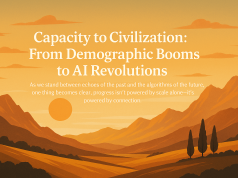In the shifting landscape of the modern workforce, the gig economy represents a seminal shift in the way we understand the relationship between work and worker. Hailed as a beacon of flexibility, the gig economy promises a future where everyone is their own boss, with the freedom to choose when, where, and how much they work. Yet, beneath this shiny veneer of autonomy lies a complex reality where the scales of power tilt precariously, often at the expense of those who toil within this framework. This piece seeks to unravel the tangled threads of the gig economy, casting a discerning eye on who truly stands to gain—and who stands to lose—in the flexibility game.
The notion of flexibility often conjures positive connotations: freedom from the nine-to-five grind, liberation from monotonous cubicle life, and the empowerment of entrepreneurship. For many, the gig economy embodies these aspirations, providing a platform for workers to craft a personalized work-life balance. However, as we dive deeper into the mechanics of gig work, we encounter an unsettling paradox: flexibility for the few can mean instability for the many.
To understand the current state of the gig economy, one must look at the forces driving its expansion. Technology has been a critical enabler, with platforms like Uber, Lyft, and TaskRabbit revolutionizing how we think about employment. The rise of app-based work has disrupted traditional industries and created a new class of labor dubbed ‘gig workers’.
But as the gig economy matures, the initial honeymoon period of unrestrained liberty is giving way to a sobering assessment of its long-term implications. Questions of worker rights, job security, and fair compensation are rising to the fore, calling into question the true cost of flexibility. The fissure between the image of the independent contractor and the reality of economic vulnerability is widening, and with it, the need for a reassessment of labor laws and regulations.
The tension between freedom and exploitation is most visible in the lack of benefits and protections afforded to gig workers. Unlike traditional employees, gig workers are often classified as independent contractors, absolving companies from providing health insurance, retirement benefits, and safeguards against workplace injury or unfair dismissal. This hands-off approach has sparked a debate about the nature of employment and whether current labor laws are equipped to address the nuances of gig work.
Moreover, the gig economy has given rise to a new digital precariat, a growing class of workers who, despite their connectivity, face unpredictability and risk that mirror the hardships of past laborers. To remedy this, we must learn from historical labor movements that fought for the rights and securities workers enjoy today.
As we envision the future of work, it is vital to strike a balance between flexibility and security. A future that embraces the innovation of the gig economy while ensuring robust protections for those who power it. Possible solutions may include the formation of digital labor unions, the implementation of minimum wage guarantees, universal basic income for gig workers, or platforms co-owned by workers themselves.
In conclusion, the gig economy’s quiet revolution has the potential to reshape the workplace in unprecedented ways. However, for this new paradigm to be sustainable, it must foster an environment where flexibility does not come at the cost of fundamental worker rights. Through critical analysis and bold reimagination of labor laws, we can ensure that the game of flexibility is one where everyone has a fair chance to win.
This examination of the gig economy is offered in the spirit of the thought-provoking, deep-dive journalism championed by The Washington Post, The New Yorker, and The New York Times. It aims to engage readers who are accustomed to nuanced discussions of complicated issues, offering a lens through which to view the future of work—one that prizes both the freedoms and the securities of the workforce.

























